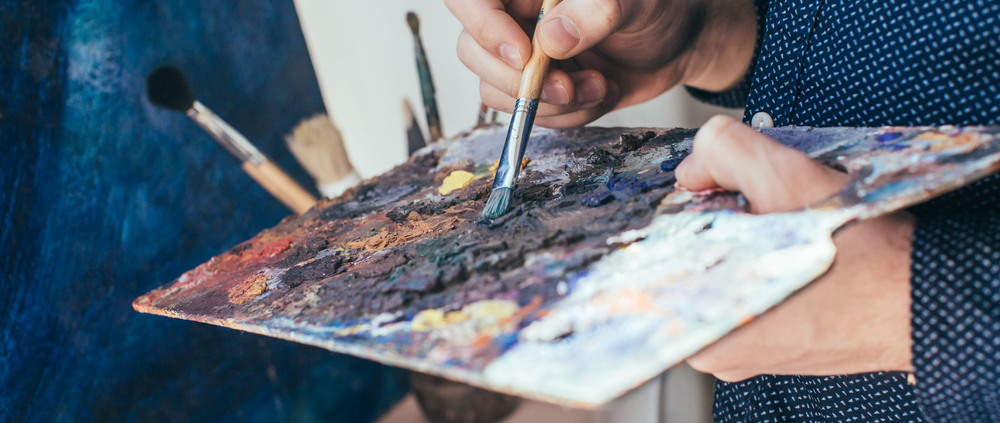Are Illustrations of Animate Objects with Incomplete Limbs Permissible?
Shafi'i Fiqh
Answered by Shaykh Irshaad Sedick
Question
Are illustrations of animate objects with incomplete limbs permissible? i.e., no eyes but a nose. Also, are objects that have all the body parts, but one is displayed as injured in a sense (i.e., only half of the arm), so the person would bleed to death permissible?
Answer
In the Name of Allah, the Most Merciful and Compassionate. May Allah alleviate our difficulties and guide us to what pleases Him. Amin.
Depicting animate life in various ways is an issue about which scholars have differed. The more lenient view is that drawing images like those described is lawful, and Allah knows best.
Prohibition of Depicting Animal Life
Making pictures of animate life is one of the major sins (kaba’ir). [Dhahabi, Kitab al-Kaba’ir]
The Prophet (Allah bless him and give him peace) said:
- “Every maker of pictures will go to the fire, where a being will be set upon him for each picture he made, to torment him in hell.” [Bukhari]
- “Whoever makes an image shall be required (on the Last Day) to breathe a spirit into it, but will never be able to do so.” [Bukhari]
Differing Views
Scholars have different interpretations of the hadith of the Messenger (Allah bless him and give him peace) that prohibits image-making. Knowing the difference between 3D and 2D images is essential to understand your question.
Three Dimensional Images
The scholars generally agreed that three-dimensional images are impermissible. However, they differed as to whether the hadith included two-dimensional images. Some Shafi’i scholars, like Khattabi and Maliki scholars, regarded two-dimensional images as permissible. [al-Mawsu‘a al-Fiqhiyya]
Revering Images
If one adopts the view that two-dimensional drawings are permissible, it is essential to note that scholars require one not to show reverence to the image. When our mother, ‘A’isha (Allah be pleased with her), showed reverence to a curtain that contained images of horses, the Messenger of Allah (Allah bless him and give him peace) removed the curtains and used them as a doormat. [Muslim]
Lastly, if one adopts the view that two-dimensional images are impermissible, one should note that outlining the human body without detailed features is permitted. Similarly, drawing the face without including details, such as the eyes, is also permitted.
Could it be Brought to Life?
The Messenger of Allah (peace and blessings of Allah be upon him) said: “Those who make images will be punished on the Day of Resurrection, and it will be said to them: ‘Bring to life that which you have created.’” [Bukhari; Muslim]
Many scholars regard the depiction of images with incomplete features (having no nose, eyes, neck, etc.) as lawful. Therefore, their makers are not included in the warning because these pictures are not “competing” with the creation of Allah. [al-Mawsu‘a al-Fiqhiyya]
Pictures such as those in question are permissible to draw, which applies to all non-detailed images, even though they are living beings.
I pray that this benefits.
[Shaykh] Irshaad Sedick
Checked and Approved by Shaykh Faraz Rabbani
Shaykh Irshaad Sedick was raised in South Africa in a traditional Muslim family. He graduated from Dar al-Ulum al-Arabiyyah al-Islamiyyah in Strand, Western Cape, under the guidance of the late world-renowned scholar Shaykh Taha Karaan.
Shaykh Irshaad received Ijaza from many luminaries of the Islamic world, including Shaykh Taha Karaan, Mawlana Yusuf Karaan, and Mawlana Abdul Hafeez Makki, among others.
He is the author of the text “The Musnad of Ahmad ibn Hanbal: A Hujjah or not?” He has served as the Director of the Discover Islam Centre and Al Jeem Foundation. For the last five years till present, he has served as the Khatib of Masjid Ar-Rashideen, Mowbray, Cape Town.
Shaykh Irshaad has thirteen years of teaching experience at some of the leading Islamic institutes in Cape Town). He is currently building an Islamic online learning and media platform called ‘Isnad Academy’ and has completed his Master’s degree in the study of Islam at the University of Johannesburg. He has a keen interest in healthy living and fitness.
